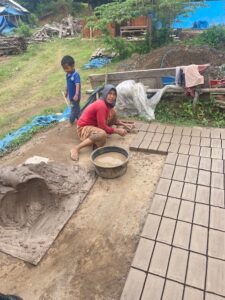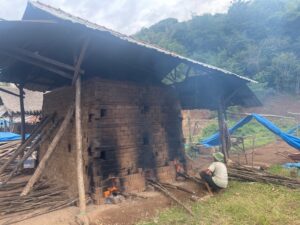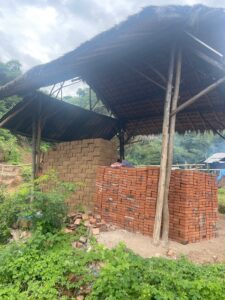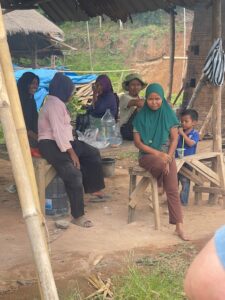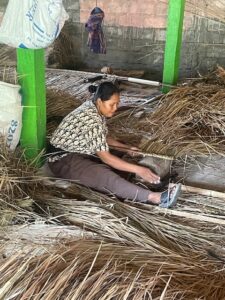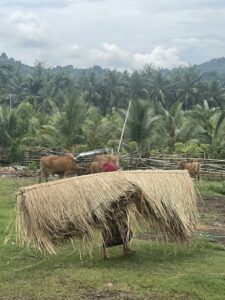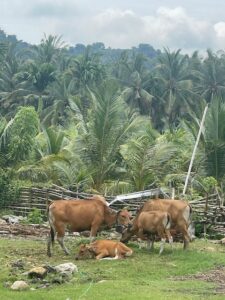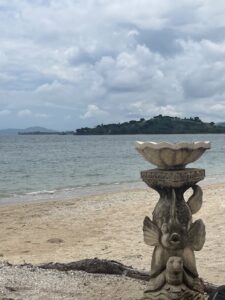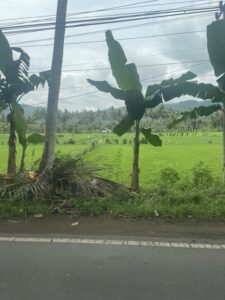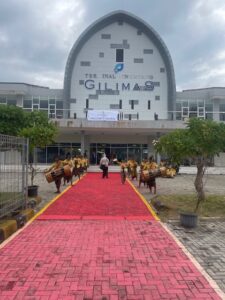
Bali and Lombok are often called, “sister islands,” with Lombok taking the role of the shy and beautiful younger sister, overshadowed by her glamourous older sister. Padangbai Harbor provides the sea link between the two. Lombak has a rich and diverse culture, which blends the traditions of the indigenous Sasak people with Balinese Hindu and Arabic influences, to name a few. Many of Lombak’s traits and customs are similar to those of Java and Bali, yet its people retain traditions and beliefs unique to the island, particularly in language, cultural performances, celebrations and the arts. Village life is based on the mainstays of farming and traditional handcraft production. Lombak is home to 3 million people and is about 120 square miles. The population is 80% Muslim.
We took a guided tour of South Lombak and witnessed families doing what they could to survive. Our first stop was at a brick making area a family had rented. As you can see from the pictures, it was a family affair. The women used the clay that men had dug out of the ground and placed it in a sectioned “form” to produce the bricks. This woman makes over 1000 bricks per day. They are then heated for 15 days at high temperature in an oven like environment and then cooled to guarantee their strength and hardness. After which they are sold on the open market for building.
Our second stop was at a farm where again, women, put together grasses to make thatched roofs for construction. These grasses are woven together onto bamboo strips to make sections that are used in roofing. A thatched roof lasts anywhere from 7 to 25 years dependent on the type of grasses used. The ones pictured are 7 year roofs. Each section sells for approximately $2.00 US. Both families were full of smiles for our tour group. The extreme poverty we witnessed was hard to imagine. Our guide said that the women do this kind of work because the men all smoke and are not as productive given the time it takes to enjoy a cigarette. Here, the men loaded them into/onto trucks and delivered them to their buyers.
Our last stop was at a private Beach Club attached to a local hotel where we were treated to tea and cakes and relaxed on the beach. Our ride through the countryside was sobering as we watched people mostly pass the time outside their homes on platforms made of wood to keep them from the bugs and rodents that surely surrounded their dwellings. Our tour guide stated that everyone on the island does what they can to earn money and these are just a few of the things the villagers do to survive. Most men are fishermen and count on the traps pictured below to produce fish for consumption and sale. Apparently, they work these areas at night and shine bright lights to attract the fish to the nets. This was a sobering tour. We were reminded how fortunate we were as we arrived back to our vessel.
